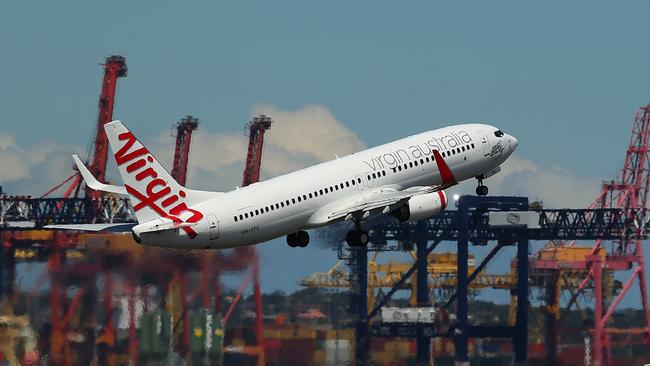Winds of change thanks to computer planning
Besides the US and Russia, no other country has such a long domestic route so affected by the strong westerly jet streams.

This week, for the fourth time this year, I was a passenger from Sydney to Perth on domestic airline, Virgin.
This flight was five hours, 21 minutes, with an actual airborne time of five hours, two minutes. Besides the US and Russia, no other country has such a long domestic route that is so affected by the strong westerly jet streams that are prevalent during the winter months. These can make this trip of more than five hours commonplace, with a return journey of 3½ hours. This particular flight at 38,000 feet was sidestepped to the south of the actual 160-knot jet stream but still was experiencing very strong headwinds.
The southern hemisphere jet stream in winter over Australia averages at times greater than 130 knots and it is stronger than its northern hemisphere counterparts mainly because of the effect of the greater land mass in the northern hemisphere.
Last year about this time I flew a corporate jet from Sydney to Auckland in two hours, four minutes. This included flying past Auckland to make an instrument approach from the east so the point-to-point time for the 1210nm would have been about one hour, 57 minutes. A steady 200-knot jet stream exactly on the tail produced a groundspeed of 700 knots. What was unexpected was just how smooth the flight was in the core of that jet stream at 37,000 feet.
These strong upper westerly winds are, in a very basic way, caused by the huge temperature difference between the poles and the equator and the rotation of Earth. Essentially a strong thermal gradient exists from the very cold sinking air that results in a polar high surface pressure with resulting outflow to the mid-latitude low-pressure systems that move in a westerly direction.
The heating at the equator then results in the convergence of north and south hemisphere trade winds, causing rising air in the low-pressure zone known as the intertropical convergence zone. This results in widespread thunderstorm activity.
The thermal equator lags about six weeks behind the position of the sun because of thermal inertia. The upper air then has to flow out from the ITCZ and a force, Coriolis, caused by Earth’s rotation, acts to the left in the southern hemisphere (right in the north) and results in westerly upper airflows in the mid-latitudes. Coriolis is stronger with increasing latitude and the strongest jet occurs at the tropopause on the polar side of the interface between the polar and temperate air masses.
Airlines try to avoid the strongest headwinds, and choose routes with the best tailwinds.
The Qantas Sydney-to-Dallas journey takes about 15 hours, but the return journey can take 17 hours. The non-stop Qantas B787 Perth to London presents a challenge, but the flight-planning computer will produce the optimum route. Soon with the B777X in service we should see more non-stop ultra-long flights.
Byron Bailey is a former RAAF fighter pilot who flew Boeing 777s as an airline captain.



To join the conversation, please log in. Don't have an account? Register
Join the conversation, you are commenting as Logout